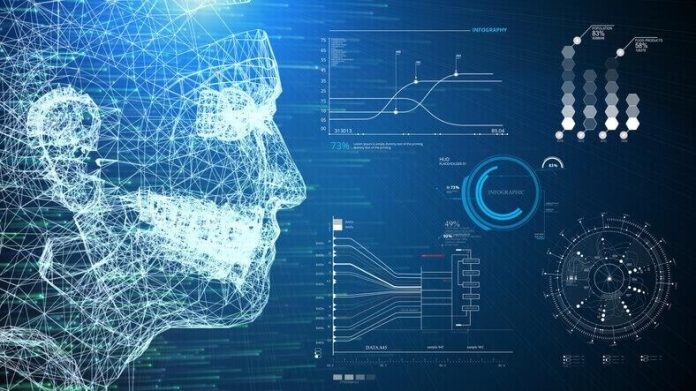The issue with big data is that there would be too much of it. People used to try to avoid media like photos, video, and speech since they really cannot accomplish anything with them. The only extra expense was the cost of storing it.
Consider the surveillance video in your neighbourhood. Approximately 100 cameras are operational 24 hours a day, 365 days a year. Every day, that’s a total of hours of video footage. It would take a team of 60 persons to evaluate this data for suspicious behaviour if it were done by humans. That is just not economically feasible.
This is where machine learning and big data come into play. Only one way to cope with this volume of data effectively is to deploy information and AI software techniques.
AI and Big Data: What’s the Connection?
Big data and artificial intelligence work well together. To educate and enhance decision-making procedures, AI needs large amounts of data, and big data analytics uses AI for improved data analysis. With this confluence, you may more readily employ sophisticated analytics capabilities such as augmented or predictive analytics, and surface valuable intelligence from your massive data sources. You can empower your users with the straightforward tools and strong technologies they need to extract high-value insights from data using big data AI-powered analytics, promoting data literacy throughout your business while enjoying the advantages of being a truly data-driven enterprise.
Companies may boost company productivity and effectiveness by combining big data with AI technologies.
- Recognising and capitalising on emerging industry and market trends
- Customer segmentation and analysis of consumer behaviour
- Personalization and optimization of digital advertising campaign effectiveness
- Using intelligent frameworks powered by big data, artificial intelligence, and predictive analytics.
How Artificial Intelligence is Used in Big Data?
The internet now gives a degree of solid knowledge on customer behaviours, likes and dislikes, activities, and personal preferences that were previously difficult to get. Social media profiles and accounts, social activity, product evaluations, tagged interests, “liked” and shared content, loyalty/rewards applications and programmes, and CRM (customer relationship management) systems all contribute potentially informative data to the big data pool.
1. Obtaining customer information
Regardless of the business, one of AI’s most valuable abilities is its capacity to learn. Its ability to discern data patterns is only beneficial if it is capable of adapting to changes and variations in those patterns. AI determines which bits of client input are meaningful by recognising extreme values and may change as needed.
The capacity of AI to operate skilfully with data analytics is the major reason why machine learning and big data seem to be inseparable. AI machine learning takes every data input and use it to develop new regulations for potential business analytics. However, problems occur when the data being utilised is of poor quality.
2. Analytics in business
According to Forbes, the current study shows that combining AI and big data can automate approximately 80% of all physical labour, 70percent of data processing activities, and 64% of data collecting chores. This implies that, in addition to their advantages to advertising and commercial operations, the two notions have the potential to have a significant impact on the workforce.
Logistics and distribution network operations, for example, rely heavily on data, therefore they’re looking to AI breakthroughs to deliver real-time insights on client feedback. Businesses may structure their budgets, tactics, and advertising around the stream of new knowledge in this way.
3. Big Data contributes to the diversification of artificial intelligence
As has previously been said, installing artificial intelligence is an expensive endeavour. Employing such machine learning technology, on the other hand, is becoming more cost-effective as a result of the utilisation of Big Data. This will make it possible for a wider number of enterprises all over the globe to use artificial intelligence in the analysis and implementation of plans created from Big Data.
As a result, Big Data is a major factor in the worldwide diversification of artificial intelligence.
Know about the two Motivating forces
Artificial Intelligence and Big Data are two of the motivating forces underlying a wide range of technological advancements that have created today’s digital world and Industrial 4.0. These two factions share the objective of maximising the value of history’s massive amounts of data.
Big Data is the storing and analysis of enormous volumes of structured, semi-structured, and unstructured data that has the possibility to be retrieved and organised to deliver important information to organisations and businesses.
Artificial Intelligence, but on the other hand, is a collection of algorithms designed to develop computers that mimic human functions (Like education, cognition and making decisions).
The Importance of Big Data in Artificial Intelligence
The following are some of the outcomes that may be achieved by the optimal gathering and usage of Big Data:
- Artificial intelligence has been discussed for aeons. It was a battle between combat robots that had become too intelligent. However, until lately, artificial intelligence (AI) was considered a marginal science.
- The introduction of massively parallel machines, notably GPUs, which are large parallel processing units having dozens of cores, as opposed to the hundreds seen in a CPU, has marked a significant step forward. This has significantly increased the speed of current AI systems, allowing them to become feasible.
- Machine learning algorithms may learn how to recreate a specific behaviour, including gathering data, with the help of Big Data fed into this processor. This allows the machine to run faster as a result of the data collected. AI is not capable of deducing conclusions in the same way that humans are. It learns by trial and error, which necessitates the collection of large volumes of data to instruct the AI.
- The greater the amount of data a machine-learning programme has, the more accurate the output it can provide. In the past, artificial intelligence (AI) did not perform effectively due to sluggish computers and tiny data sets. There were no sensors back then, as there are now when a vehicle might have hundreds of sensors integrated into it. There was also no factual information since the Internet was not widely accessible at the time.
- Today, we have whatever we need, including fast computers, input devices, a network, and vast volumes of data sets, to do our tasks. With or without Big Data, it’s reasonable to argue that Artificial Intelligence does not exist.
- Massive companies and multinational corporations (MNCs) rely on big data to run their operations. Even if the amount of data gathered is a useful asset, it is what firms do with that data that is much more important. The more efficiency with which resources are used, the greater the potential for growth.
Because it may assist in identifying the most efficient method for doing business, Big Data is of paramount significance in helping businesses make smarter, more informed decisions.
Real-time analysis is another lauded benefit of Big Data, as a massive volume of data may assist in making complicated judgments and taking real-time actions as a result of the massive amount of data. While analyzing Big Data, you can experiment with some DataOps platforms that can help you organize your data. But first you should know what they are, so you should check for a DataOps platform definition.
What Applications of AI Technology and Big Data Are Being Made by Businesses?
- It is possible to do natural language by recording and linking millions of samples from human language to their matching computer programming language translations. In order to assist enterprises in analysing and processing massive volumes of human language data, computers are trained and put to work in this manner.
- Contributing to the expansion of the monitoring capabilities of agricultural organisations and companies Farmers can count and monitor their crop as it grows through each stage of development until it reaches maturity with the aid of artificial intelligence. Artificial intelligence can detect weak places or faults in these vast tracts of land long before they spread to other parts of the land. When viewing and extracting data, the AI makes use of satellite systems or drones, which are operated by humans.
- Banking and securities, which are used to keep track of the actions on the financial markets. As an example, the Securities Commission (SEC) is using network analytic and natural language processing to detect and prevent unlawful trading activity in the financial markets. For high-frequency trading, trade data analytics are acquired, which are then used for decision-based trading as well as risk analysis and predictive analysis. They are also used for a variety of other purposes, such as early fraud warning, card fraud prevention, audit trail archiving and analysis, reporting corporate credit, customer information translation, and so on.
- By using Big Data analytics, companies may get a better understanding of their customers’ attitudes, which can help them develop their businesses.
- In addition, with the right use of Big Data, fraud detection and risk management in financial transactions are made feasible as well.
- Anti-money laundering is one of the high-value and current phenomena that is being driven by Big Data analysis and is being driven by the analysis of Big Data.
- Beyond these aspects, there are several more benefits that data may provide to large business organisations. Managing large amounts of data may be burdensome for any human being, and it is much too difficult to handle data efficiently just via human resources. As a result, it is essential to use artificial intelligence to process Big Data. It reduces the amount of time and effort required for mechanical data input operations, and it enables a more efficient flow, transfer, storage, and exchange of data for all parties involved.
Bottom Line
Big data consulting provides tangible business advantages to every customer and, as a result, turns the analytics function from being a source of expense to a source of income. Data analytics and big data are used in Big Data Analytics Consulting Firms services to manage the information lifecycle, which has gotten much too little attention in the past. Its features are linked with extensive knowledge of big data to aid customers in making the best choices and achieving the best outcomes.




































